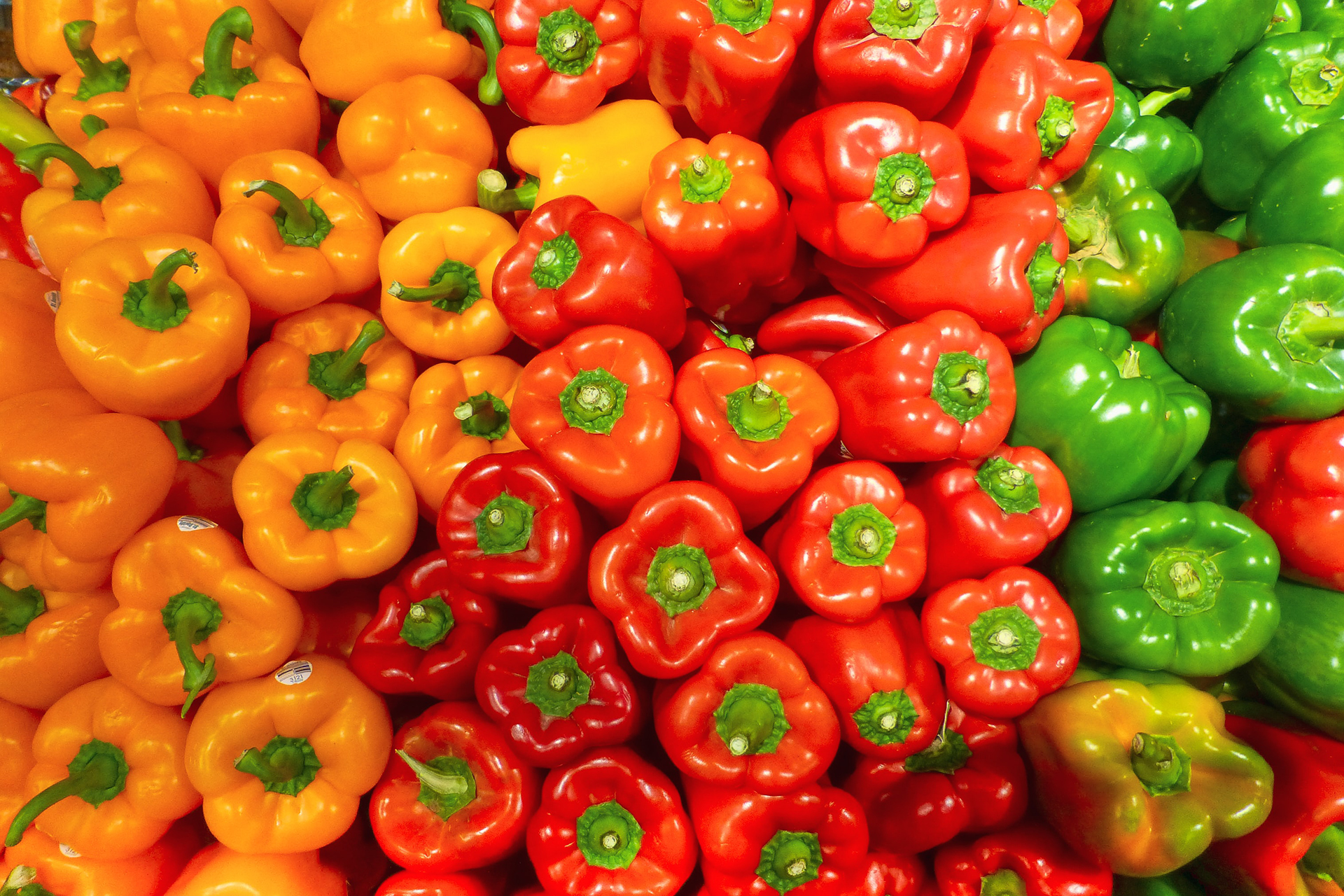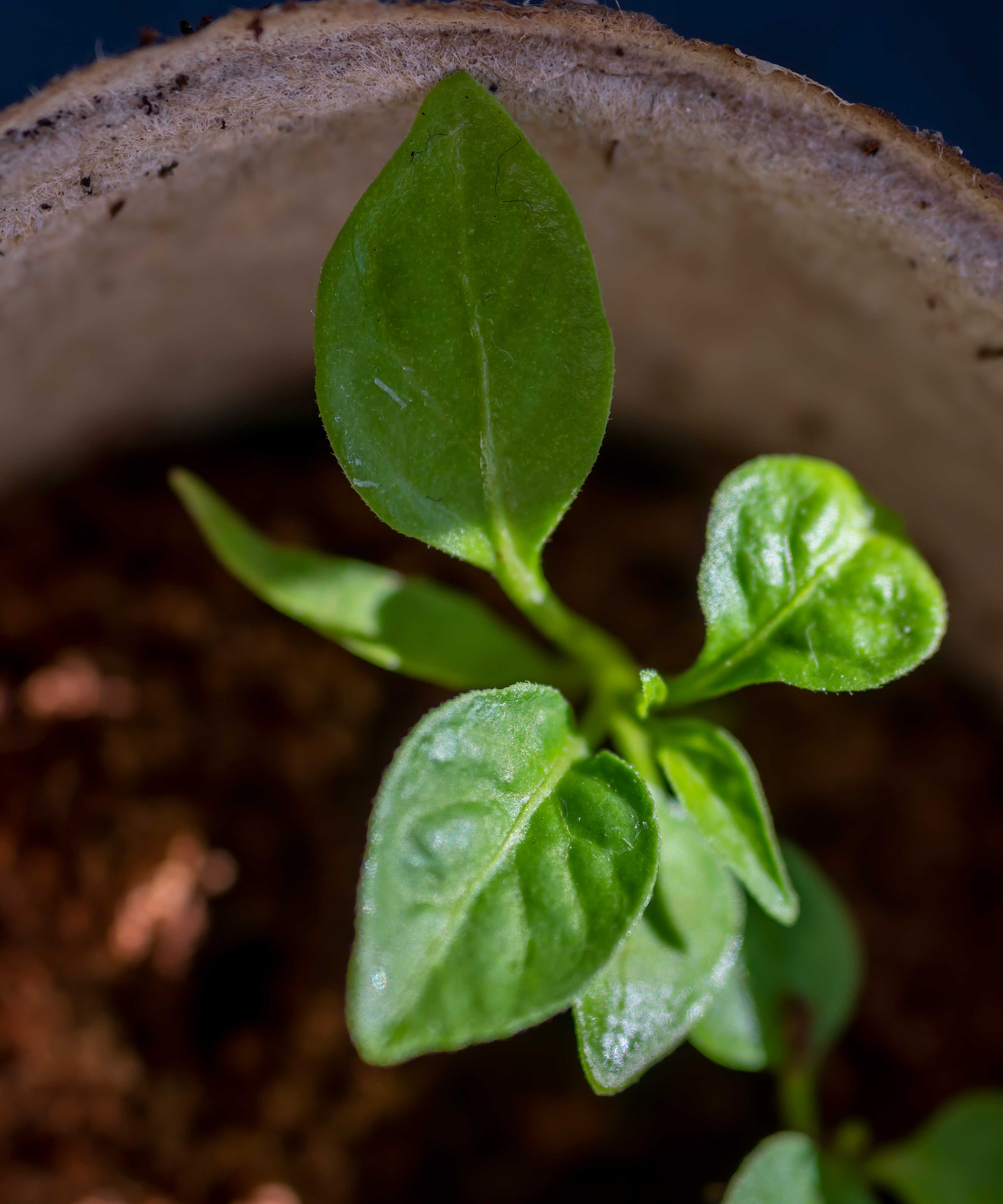How to grow and care for bell peppers – for a bumper crop
Discover how to grow and care for bell peppers to enjoy a colorful homegrown harvest to add to a wide range of dishes and salads


Once you know how to grow and care for bell peppers you can enjoy the vibrant and colorful crop as part of your homegrown harvest.
Also know as sweet peppers, or capiscum, bell peppers come in a variety of colors, shapes and sizes, and edible both raw or cooked, are highly versatile for use in a wide ranges of cooking and dishes.
Bell peppers are certainly one to add to your vegetable garden ideas as an economical crop to grow – the cost of one pepper at the grocery store will far exceed the cost of growing from seed your own pepper plants, which will produce numerous fruits.
How to grow and care for bell peppers – for beginners
When it comes to how to growing bell peppers, there are a various options and the best method to use will depend on the zone in which you live.
Sweet peppers are tender plants that thrive in warm conditions. If you live in a colder area you will probably enjoy greater success growing bell peppers in a greenhouse or under cover, whereas those living in warmer or milder regions can still enjoy a healthy crop from planting them outside.
You can also encourage bigger and healthier crops by pepper companion planting with beneficial plants, as an organic way to protect the peppers from pests and improve pollination of fruits.

Where to grow bell peppers
First assess your local growing conditions before deciding how to grow bell peppers.
Design expertise in your inbox – from inspiring decorating ideas and beautiful celebrity homes to practical gardening advice and shopping round-ups.
Sweet peppers need warmth and a sunny position, so tend to produce higher yields when grown under cover in cooler regions. You can add them to your list of crops to grow when planning a greenhouse.
They can also be grown outside in warmer areas, but in all cases they can benefit from being sown indoors and started off in a warm environment, before being planted out, where relevant.
Another option is growing bell peppers as a vegetable garden container idea. The benefits of this are you can move the pots around to make sure the pepper plants benefit from the sunniest and most sheltered conditions.
'Bell peppers can be grown in a variety of situations and do well in greenhouses, outside gardens and even containers. Some gardeners choose to start peppers from seed, while others prefer to buy plants already coming up and ready to transplant into the soil. With good soil, fertilizer, sun, and water, one should have good results,' explains Gina Abernathy, owner of Abernathy Farm Supply in Alabama and founder of Home at Cedar Springs Farm.
Growing bell peppers from seed indoors

Start off growing bell peppers by sowing the seeds indoors to give them a head start and help them to germinate – this is essential if you live in a cooler region.
Seeds should be sown indoors about 8 to 4 weeks before the last frost, as they take a while to grow.
Sam Corfield, author of Sow, Grow Gather: The beginner's Guide to Growing an Edible Garden suggests the following method for planting bell pepper seeds indoors:
- Fill an 3in (8cm) pot with compost almost to the to top
- Use a pencil or small dibber to poke four evenly spaced holes into the surface of your pot, 1/2 in (1cm) deep
- Pop one seed in each hole, cover with a little more compost and give them a gentle water
- Leave your plants on a warm windowsill with a plastic bag over the top, or in a propagator – they like to be around 65-70ºF (18-21ºC)
- Don’t let them dry out
Take the pot out of the propagator or remove the plastic bag as soon as the seedlings start to appear, and keep in a warm, sunny spot, at about 60-64ºF (16-18ºC).
Once the seedlings have grown to about 5in (12cm) tall and have at least two true leaves, transplant them into their own 3in (8cm) pot filled with potting compost.
Continue to pot them on as the roots start to grow out of the drainage holes into a final pot of about 12in (30cm).
'The more heat they get the better, so keep them indoors by a sunny window, in a south-facing spot outside, or in a greenhouse,' advises Sam Corfield.
How to grow bell peppers from young plants

If you don't have time or are too late for growing bell peppers from seed, then you can find young plants at garden centers in late spring and early summer.
Plant them outdoors in a sunny, sheltered spot once the danger of frost has passed, or grow in a greenhouse, polytunnel or by a sunny windowsill in a conservatory or garden room.
Peppers are very sensitive to cool temperatures, so harden off young plants prior to planting them outdoors to allow them to acclimatize to the change in conditions.
Growing bell peppers outside

If you live in a warm or mild region, bell peppers can be grown outdoors in a warm, sheltered and sunny spot.
'Bell peppers are a warm-season crop that grow best in full sun. Plant them outdoors after the last frost date in your area,' explains explains Lindsey Hyland, founder of Urban Organic Yield.
Plant bell peppers in well draining soil, slightly acidic, rich in organic matter. Prepare your site in advance by digging in homemade compost or manure.
Try to avoid planting peppers next to crops in the nightshade family, or in a site that has previously grown these crops – such as where you're growing tomatoes or potatoes – as it can increase the risk of disease spreading among them.
If you're growing bell peppers outdoors:
- First harden off your bell pepper plants for about 2 weeks, by bringing the plants outside during the day and back inside at nighttime
- Check the soil temperature is at least 60°F (16°C) – you can warm up the soil in advance by covering it with a black polythene sheet or cloche for two weeks
- Space seedlings 18-24in (45-60cm) apart depending on the variety
- If you live in a cooler area, cover with cloches or fleece until about the end of June

How to care for bell pepper plants
To care for bell peppers the plants need to be well watered. Water them a little, but often, to keep the soil moist, but don't let it become waterlogged as this will cause the plants to rot.
Don't allow the plants to dry out, so if you live in a hotter zone, or during dry, hot spells, you might need to water them daily, and if growing peppers in a greenhouse, keep it well ventilated.
'Peppers can be fertilized once a month with a balanced fertilizer,' says Lindsey Hyland.
When plants are about 8in (20cm) tall, if you pinch out the growing tip it will encourage branching and hopefully should result in the production of more fruit. Stake plants if they produce large peppers to prevent them from falling over.

Are bell peppers easy to grow and care for?
'Bell peppers are easy to grow, but they like a lot of sun and warmth,' explains Lindsey Hyland of Urban Organic Yield.
So long as you provide them with the right conditions, however, bell peppers are fairly low maintenance.
'Other than watering, the other thing you might need to do is pull off some of the flowers when the plant is just starting to grow. This will help encourage root and leaf growth, rather than the plants putting all of their energy into growing the fruit right away,' explains Ashley Pickens of Breathing Garden.

How long does it take to grow bell peppers?
Sweet bell peppers have a long growing season, about 60 to 90 days.
'Bell pepper plants take about 75 days from planting to reach maturity, and produce peppers for several weeks. You can extend the harvest by picking peppers when they are still green and allowing them to ripen indoors,' explains Lindsey Hyland.
Bell peppers grown in a greenhouse will be ready to harvest sooner than those grown outside, from mid-summer into fall, depending on the variety and when they were planted.
All peppers will start out green, but depending on the variety they can then turn to red, orange, yellow or even purple. If you do leave them on the plant to ripen fully, this will prevent the production of further fruits.
Can you grow peppers from the seed inside a pepper?
'You can grow bell peppers from the seed inside ripe fruit. However, the seeds must be properly dried and stored before you can plant them,' explains Aaditya Bhatta, founder of Plantscraze.
Rachel is senior content editor, and writes gardening content for homesandgardens.com, Homes & Gardens magazine, and its sister titles Period Living Magazine and Country Homes & Interiors. She has written for lifestyle magazines for many years, with a particular focus on gardening, historic houses and arts and crafts, but started out her journalism career in BBC radio, where she enjoyed reporting on and writing programme scripts for all manner of stories. Rachel then moved into regional lifestyle magazines, where the topics she wrote about, and people she interviewed, were as varied and eclectic as they were on radio. Always harboring a passion for homes and gardens, she jumped at the opportunity to work on The English Home and The English Garden magazines for a number of years, before joining the Period Living team.
